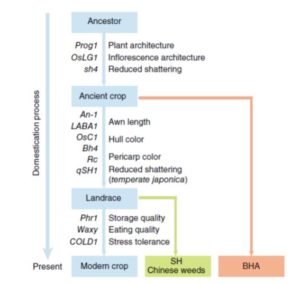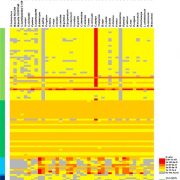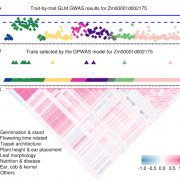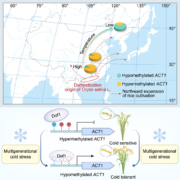Signatures of adaptation in the weedy rice genome
 Crop domestication has been accompanied by the evolution of aggressive weedy crop relatives that compete for resources and make weed management a challenge. By using whole-genome sequencing of the two most commonly found weedy rice strains in the US (SH and BHA), and comparing them with the genomes of several accessions of cultivated rice, wild progenitors and other weedy strains from China, Li et al. aimed to shed light on the genetic mechanisms underlying the evolution of weedy rice. The authors found that US weedy rice strains originated from Asian accessions after the domestication of rice in Asia, finding support for the de-domestication hypothesis due to the presence of certain early-selected domestication-associated alleles. Moreover, they found that weediness can apparently evolve relatively easily, through selection on a small number of genomic regions. These findings should be a warning to rice producers around the world to stay vigilant to the presence of weedy strains. (Summary by Gaby Auge) Nature Genet. 10.1038/ng.3825 (Note – if you like stories about rice domestication, a related paper by Wang et al. looking at evidence of selective sweeps and feralization in the genomes of Asian wild rice has just come out in Genome Research ).
Crop domestication has been accompanied by the evolution of aggressive weedy crop relatives that compete for resources and make weed management a challenge. By using whole-genome sequencing of the two most commonly found weedy rice strains in the US (SH and BHA), and comparing them with the genomes of several accessions of cultivated rice, wild progenitors and other weedy strains from China, Li et al. aimed to shed light on the genetic mechanisms underlying the evolution of weedy rice. The authors found that US weedy rice strains originated from Asian accessions after the domestication of rice in Asia, finding support for the de-domestication hypothesis due to the presence of certain early-selected domestication-associated alleles. Moreover, they found that weediness can apparently evolve relatively easily, through selection on a small number of genomic regions. These findings should be a warning to rice producers around the world to stay vigilant to the presence of weedy strains. (Summary by Gaby Auge) Nature Genet. 10.1038/ng.3825 (Note – if you like stories about rice domestication, a related paper by Wang et al. looking at evidence of selective sweeps and feralization in the genomes of Asian wild rice has just come out in Genome Research ).









